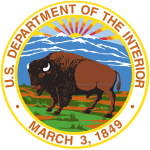Art Museum of the Americas (AMA), located in Washington, D.C., is the first art museum in the United States primarily devoted to exhibiting works of modern and contemporary art from Latin America and the Caribbean. The museum was formally established in 1976 by the Organization of American States (OAS) as the Museum of Modern Art of Latin America. Artists represented in the AMA's permanent collection include Carlos Cruz-Diez, Candido Portinari, Pedro Figari, Fernando de Szyszlo, Amelia Peláez, and Alejandro Obregón.
The art collection of the OAS was initiated under the organization's Visual Arts Unit, beginning with the first donated artwork by the Brazilian neo-realist artist Portinari, in 1949. In the following decade the Permanent Council of the OAS determined to establish an acquisitions fund, in order to build up a permanent collection of artworks by significant contemporary artists from the member states of the OAS. A number of works were also purchased from or donated directly by artists, after the temporary exhibitions periodically held at the OAS gallery.
The Art Museum of the Americas itself was established in 1976 by OAS Permanent Council resolution, on the occasion of the United States Bicentennial. The museum opened in what was formerly the official residence of the OAS Secretary General, a Spanish Colonial-style structure designed in 1912 by the architect Paul Cret.
Initially the permanent collection held some 250 artworks, expanding over the next quarter-century to over 2000 items of painting, sculpture, installations, photography, and drawing, from the early 20th century and onwards. In addition to its permanent collection of mainly Caribbean and Latin American art, AMA hosts temporary and special exhibitions from across the region, and provides educational seminars and lectures from invited speakers.
The Art Museum of the Americas has also expanded its programs to include evening events, such as Art After Dark, with cutting edge music, video, performance, and installation art.










